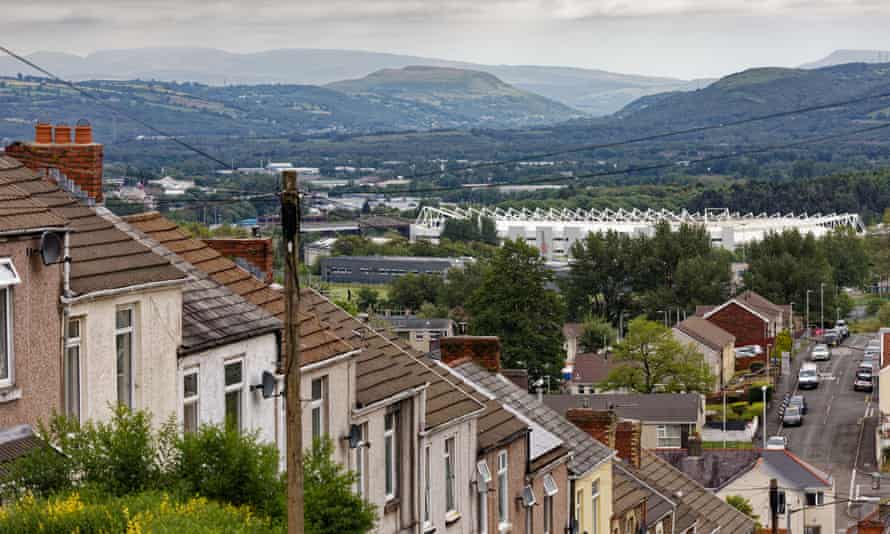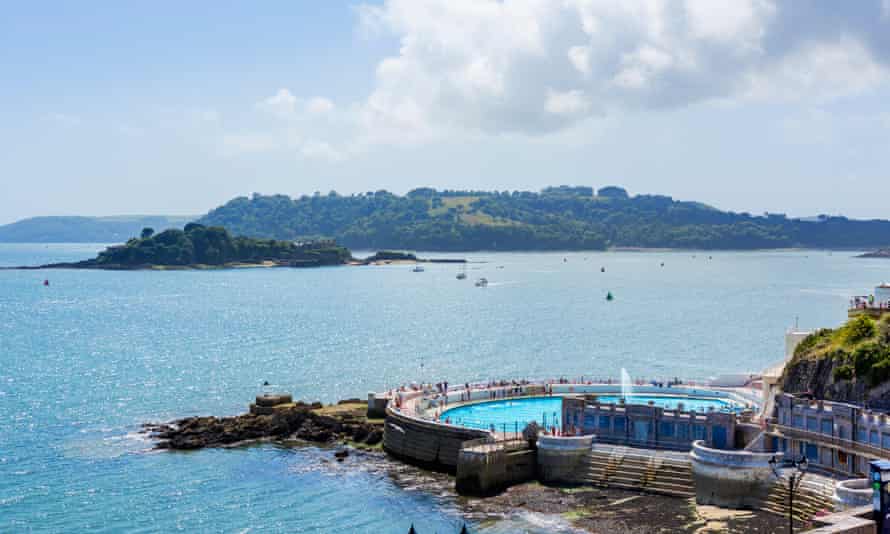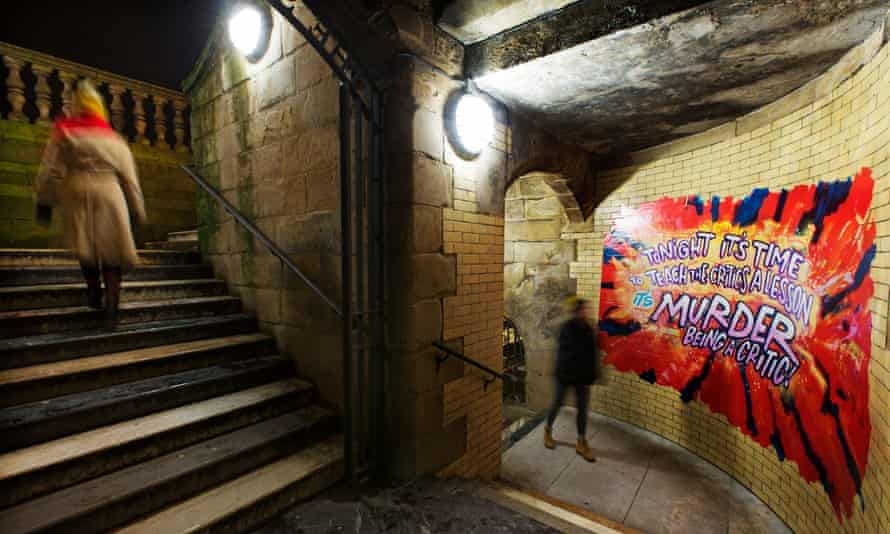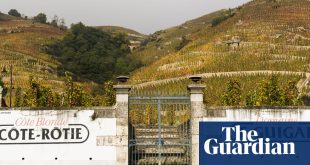It’s a truism that so many of Britain’s high streets look alike, but often, a few steps away from the main shopping areas the particular character of a town or city can still be discerned. Manchester is ringed by canals and railways built in the 18th and 19th centuries. Liverpool slopes down to the sea via streets lined with old shipping agents’ offices and chandlers’ workshops. In Edinburgh you just have to look up and around to see history bursting out of the bedrock. We still tend to think Paris owns flâneur-ing – the art of strolling and observing urban life. But wandering our cities and towns is just as rewarding – here are six of our favourites.
Liverpool: maritime glories

The decline of a port city offloads more ghosts of lost grandeur than you’ll find in any inland metropolis. It’s impossible, almost, to imagine Liverpool as the second city of empire, the busiest port in the world, the gateway to America. The Mersey, brown-grey and sluggish, is mostly empty these days, crossed only by commuter and tourist ferries, occasional boats from Ireland and oversized cruise vessels. And yet, the river does still draw people to its edge; many of Liverpool’s most important streets end up there. The famous Three Graces and Albert Dock are almost too big to admire, unless you’re actually on the river, but, as Unesco notes, no fewer than 380 of the city’s buildings are of historic value. World heritage status might have gone but the maritime mercantile past is still everywhere.
My favourite landmarks include the Portland stone and redbrick Albion House, former HQ of the White Star Line, on James Street; the tug-shaped Baltic Fleet pub; the British and Foreign Marine Insurance Company Building, on Castle Street, with its marine-themed mosaics; the Victorian buildings of Water Street and Dale Street and their shadowy alleyways and cross-streets; the Western Approaches museum on Rumford Street, of a second world war operations room (there’s no map like a naval map); and Regent Road, with its tobacco warehouse and the last few “unregenerated” wharves – go soon, as development is coming. The sea and its stories are everywhere; there’s even a porthole in the ground outside John Lewis, where you can peer down to the Old Dock, built by pioneering civil engineer Thomas Steers in 1709-1715. Online there are countless maps and resources to chart a sea-themed walk, but why not explore Liverpool like a lost ship, heading this way and that and looking out for hints and names and connections?
Swansea: a seamy, dreamy city

An “ugly, lovely” place to Dylan Thomas; a “pretty shitty” one to Terry Walsh in Kevin Allen’s 1997 comedy caper Twin Town. Wales’ second city is both of these things, as is starkly obvious when you glance along the sweepingly curvaceous front and glistening sea, and then turn round to gawp at the ranks of dead-eyed pebble-dashed terraces swarming the surrounding hillsides. The Lexuses and electric BMWs take the coast road to the Gower; the modified old bangers still bounce around Townhill.
To cut a poetic line through the sprawl, you could do worse than explore a few Dylan-linked places: Cwmdonkin Park (The Hunchback in the Park) is small and bosky; 5 Cwmdonkin Drive, his birthplace and now a museum, is on an utterly bourgeois street in the Uplands district; the Dylan Thomas Centre in the port area has a decent collection of memorabilia, photographs and books; the Kardomah on Park Street is not the original one where Thomas and his arty “gang” met, but it is a pleasingly retro eating place suited to talking about books and manifestos over a frothy coffee; and Salubrious Passage, which has the seamy character of LA’s Skid Row of yore, and will eventually pour you out on to Wind Street and the no sign Bar, which featured in Thomas’ story The Followers, renamed as Wine Vaults.
Then, after all this urban exploration, you should take that seafront prom and hike westward along the route followed by the world’s first passenger train (the 1805-built Mumbles Railway – a horse-drawn tramway), not stopping till you get to the end of the pier at dreamy, lovely, pretty Mumbles – where Twin Town also concludes, as it happens.
Greater Manchester: in Lowry’s footsteps

Every great city offers its walker/reader multiple narratives. In Greater Manchester (and yes, you may need trams and buses for this “walk”), I feel the musical ones have been told to death. Has anyone got anything more to say on Tony Wilson/Joy Division/“Madchester”, really? But LS Lowry remains beguiling because he is simultaneously mega-famous and massively ignored. He is too popular to be cool, too English to be stylish, too idiosyncratic to front a school or movement. He is also a vital visual conduit to the north’s industrial past and the industrialised souls of its inhabitants.
There seem to me two interesting ways of tracing the steps of Lowry. One is to seek out those places where he dashed off rough sketches, places like Peel Park in Salford, Ancoats, or the streets around Pendlebury and Victoria Park close to where Lowry lived; or perhaps Crowther Street in Stockport, where he tightened the angles to get just the effect he was after. But so many of the mills, factories and houses have been razed, and it is a feat sometimes to conjure a picture of the places featured in the masterworks.
An alternative approach, and one with which he would surely have empathised, is to try to find your own vantages and create your own “composites”. Lowry is famous for layering multiple images and scenes – real and imagined – to populate his teeming tableaux and give them their alienating perspective. Manchester at street level can often feel too confining to take a view, but at vantage points beside the Rochdale Canal, at the Temple in Heaton Park, or even in a rooftop hotel bar that sells aerial views with its overpriced drinks, you can Lowry-ise the modern city, glass-and-steel high-rises standing in for the glorious red-brick chimneys of a century ago.
London: TS Eliot and other wastelands

London is written to death. It has generated biographies, guidebooks, poetry books, novels, memoirs, atlases, apologias. The only way to see anything new, or anew, is to shun all these and randomise your ramble. Ironically, one of the most famous of all London poems, The Waste Land, can be a useful place to start. The last stanza of the opening section, The Burial of the Dead (which, incidentally, quotes from flâneur-in-chief Baudelaire’s Les Fleurs du mal), floats morosely around that part of the City close to where Eliot worked in Lloyds Bank’s Colonial & Foreign Department. Nicholas Hawksmoor’s Saint Mary Woolnoth, St Magnus the Martyr, London Bridge and King William Street are all key sites in the poet’s Unreal City.
Over the course of its five sections, the poem mentions Greenwich, the Isle of Dogs, River Thames, the Cannon Street hotel (the venue for the foundation congress of the Communist Party of Great Britain in 1920, bombed during the Blitz) and Metropole hotel (now the Corinthia), the Strand, Queen Victoria Street and, for those who need a suburb to make a walk feel complete, Richmond and Kew.
The poem has a ponderous, melancholy quality (listen to Eliot reading it to get the full effect) that, if piped in to ear buds as you tick off its sites, can fill even the glitziest and most garish new development with an air of gloom and discomfort. During the 2012 London Olympics build-up, many sages based in the Great Wen – to use William Cobbett’s disparaging 1820s phrase – lamented the fact London was losing its empty spaces, its liminal zones, its broken buildings, its wastelands. Poetry is a good way to impose peace and quiet, sadness and shabbiness, on the clamorous, thrusting capital.
Plymouth: coasting around capitalism

A city that only gives up its true beauty when you turn your back on it and face the Sound, Plymouth is a conundrum worth trying to solve. Capitalism has not been kind to our conurbations and it forces on us the obligation to try to connect disparate elements in order to make sense. Here, I glance up at the 10ft-tall statue of Francis Drake with a globe that looks like one of his bowling balls – is that story, like Alfred’s burnt cakes, still told in schools? Then I look over the tops of the mid-rises to see if I can spot Drake Circus, the shopping mall. I look at the beautiful natural harbour and think of Darwin, joining the Beagle at Devonport; this was, along with Falmouth, one of the last places to board before open sea.
I walk through the post-Blitz grid city – a bargain-basement Brasilia, but a genuine attempt to create a future – and then stand before the 14-storey Crescent Point building. Plymouth is a uni-city, its undergrads bankrolling ill-conceived additions to an already chaotic-looking centre. In any case, the Point’s double towers of student flats sit empty,, a weekly fixture in the local newspapers. It’s all a bit much, but there is a flâneuring solution to Plymouth in the shape of the South West Coast Path, which skirts Plymouth on a fascinating section between Wembury Point and the Tamar Bridge, taking in Fort Bovisand, the art deco Tinside Lido and Royal William Yard – with ferry services to Cremyll in Cornwall if you want to skip the jagged edges and ins and outs of Plymouth’s various harbours and bays. Always on view is the Great Mewstone – the inspiration for Turner’s famous watercolour.
Edinburgh: steep in history

In 2017, Edinburgh came top in a survey of walkable cities carried out by campaigning charity Living Streets; it rated high for safety, access to nearby parks, pavements and the overall quality of its streets. It is, though, a city of many levels, with the Castle and Old Town on a volcanic plug that, along with Arthur’s Seat, are the best known of its alleged seven hills (so many places like to make this Roman connection). Is the breathless flâneur able to process his or her observations? You could try, by exploring Edinburgh’s many stairways, which link up the levels and create shortcuts as well as atmosphere. Plotting an urban hike by taking on News Steps (St Giles’ Street, off the Royal Mile, down 124 steps to Market St), Vennel Steps (in Grassmarket), Warriston’s Close (off Cockburn St) and Scotsman Steps (connecting North Bridge and Waverley Station) will open up unexpected views and your lungs. While taking a rest in a coffee shop or pub, spend half an hour enjoying the 1948 expressionist short Waverley Steps – free on the BFI site.
 Top Naija News: Nigerian News, Breaking News Nigeria and World News Top Naija News is a daily news publication in Nigeria, delivering the latest breaking news in Nigeria and around the world.
Top Naija News: Nigerian News, Breaking News Nigeria and World News Top Naija News is a daily news publication in Nigeria, delivering the latest breaking news in Nigeria and around the world.



